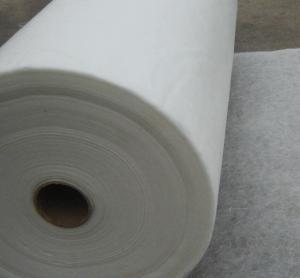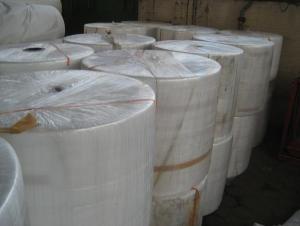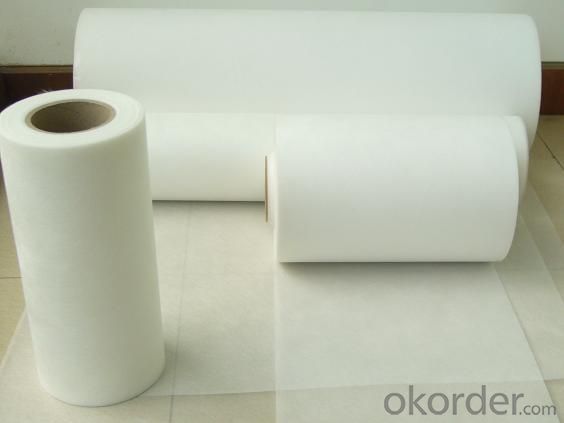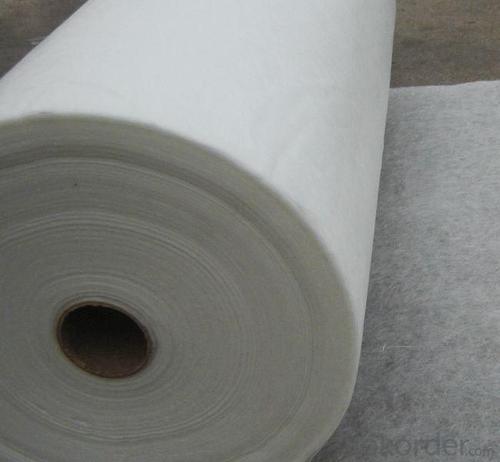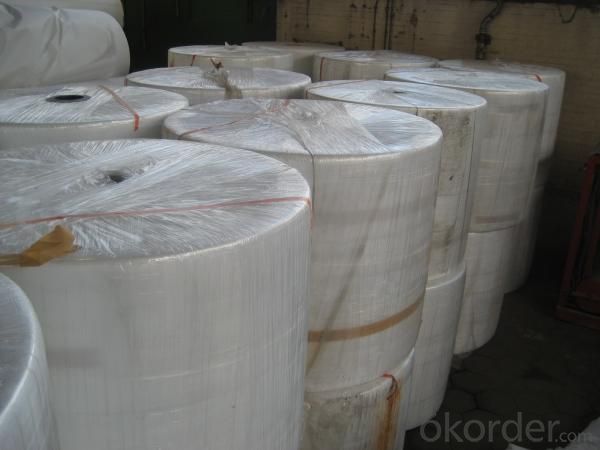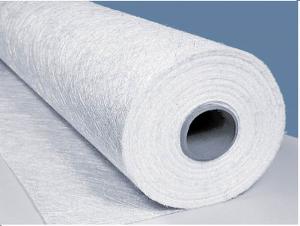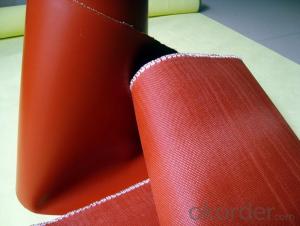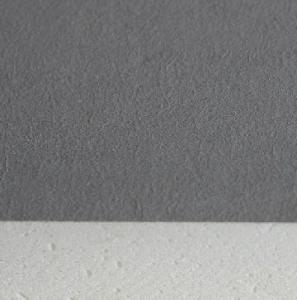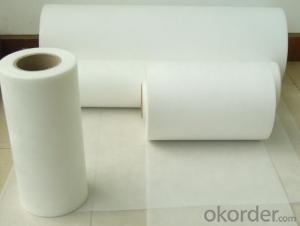Black Fiberglass Fabric RTM Mat
- Loading Port:
- China Main Port
- Payment Terms:
- TT or L/C
- Min Order Qty:
- One Pallet kg
- Supply Capability:
- 20 days for 1 x 40FCL kg/month
OKorder Service Pledge
OKorder Financial Service
You Might Also Like
Specification of FIberglass RTM Mat
1.ISO9001-2008 quality control certificate.
2.Chopped Strand Mat for RTM
3.Good wet out in resins.
Have ISO9001:2008 quality control certificate.
Chopped strand mat is suitable for application by hand lay-up, reinforce and machine FRPmolding, such as interior decoration of vehicles, boat hulls, sanitary ware, anticorrosive pipes, tanks, building materials, tables, chairs and all kinds of compisite FRP products.
Application of FIberglass RTM Mat
Product code | Glass type | Unite weight (g/m2) | Weight (mm) | Roll weight (kg) | Moisture (%) | Binder content (%) |
EMC100 | E Glass | 100+/-20 | 200-3200 | 30-70 | <0.2-0.3 | 2-6 |
EMC150 | E Glass | 150+/-20 | 200-3200 | 30-70 | <0.2-0.3 | 2-6 |
EMC200 | E Glass | 200+/-20 | 200-3200 | 30-70 | <0.2-0.3 | 2-6 |
EMC300 | E Glass | 300+/-20 | 200-3200 | 30-70 | <0.2-0.3 | 2-6 |
EMC450 | E Glass | 450+/-20 | 200-3200 | 30-70 | <0.2-0.3 | 2-6 |
EMC600 | E Glass | 600+/-20 | 200-3200 | 30-70 | <0.2-0.3 | 2-6 |
EMC900 | E Glass | 900+/-20 | 200-3200 | 30-70 | <0.2-0.3 | 2-6 |
Packing of FIberglass RTM Mat
Product is manufactured in form of a roll wound on a paper tube and then packed in a plastic film and placed within craft on pallet.
Above package is standard one, any other package style is negotiable by both of us.
Storage of FIberglass RTM Mat
It is recommended that the fiber glass is stored in a cool and dry environment. Recommended temperature range of storage is between 10-30°C and relative humidity between 50-75%. The fiber glass should store in the packaging until just prior to use.
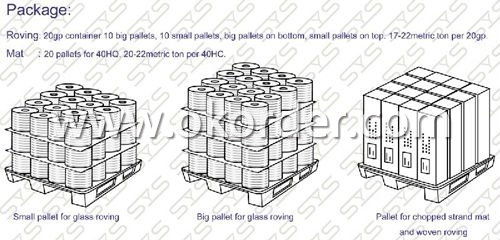
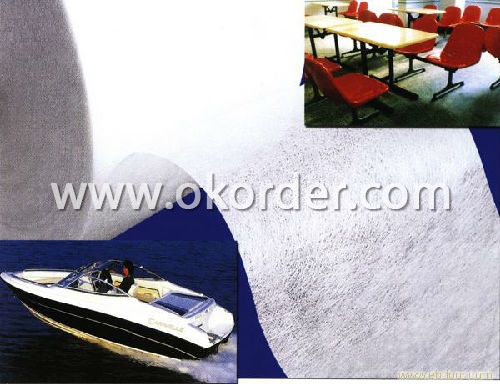
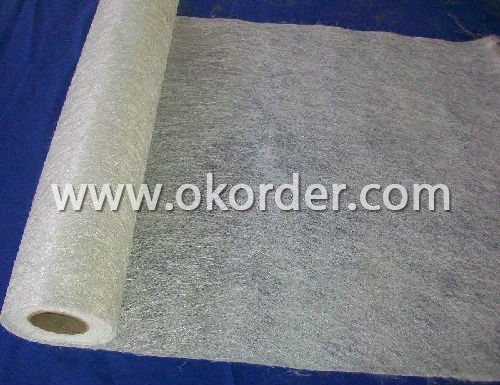
- Q: Construction method of organosilicon waterproof coating
- The total coating thickness is above 1.5mm, and the coating interval is 2-12h (depending on the weather condition). 1-2 layers of glass fiber cloth or other matrix material can be added to the coating.
- Q: Can fiberglass fabric be used in low-temperature applications?
- Indeed, low-temperature applications can make use of fiberglass fabric. This material is renowned for its remarkable thermal insulation characteristics, rendering it appropriate for deployment in low-temperature surroundings. It is frequently utilized in various scenarios, including cryogenic insulation, cold storage facilities, and refrigeration systems. The fabric itself possesses a diminished thermal conductivity and can endure exceedingly low temperatures without compromising its structural integrity. Moreover, it exhibits resilience against moisture, chemicals, and UV radiation, thereby establishing itself as a dependable and long-lasting option for low-temperature applications.
- Q: Is fiberglass fabric resistant to birds?
- Fiberglass fabric does not possess natural resistance to birds. Despite being a robust and enduring substance, birds can still inflict harm upon it. They have the tendency to peck at or scratch its surface, leading to slight to moderate impairment. Furthermore, if fiberglass fabric meets their requirements, birds might employ it as a construction material for their nests. Nevertheless, fiberglass fabric is not the preferred choice for birds due to its lack of suppleness and flexibility, qualities typically sought after for nesting. Consequently, while it may not be entirely impervious to birds, fiberglass fabric is less likely to be heavily targeted or extensively damaged by them in comparison to other materials.
- Q: What does "PCB" mean?
- What is the raw material of PCB (printed circuit board)? We know there is something called "glass", this kind of material in our daily life. Obviously, such as core fireproof cloth, fireproof felt is glass fiber, glass fiber and resin is easy to combine, we put into the tree structure of glass fiber cloth and high strength grease, hardening has heat insulation PCB, not easy to bend the substrate -- if the PCB board is broken, white edge delamination, enough to prove that the material is glass fiber resin.
- Q: Are fiberglass fabrics resistant to moisture or humidity?
- Fiberglass fabrics exhibit remarkable resistance to moisture and humidity due to their composition. Comprising delicate glass fibers, fiberglass possesses the ability to repel water and hinder the effortless passage of moisture. The non-porous structure of fiberglass prohibits the proliferation of mold or mildew, rendering it a superb material for scenarios frequently subject to moisture or humidity. Moreover, fiberglass fabrics endure substantial levels of moisture without compromising their durability or reliability, thereby establishing themselves as a dependable option across diverse sectors such as construction, marine, and automotive industries.
- Q: How is fiberglass fabric used in the production of protective clothing?
- Fiberglass fabric is commonly used in the production of protective clothing due to its high strength and heat resistance properties. It is often used as a reinforcement material in protective suits, gloves, and aprons, providing added durability and protection against heat, flame, and chemical hazards. The fabric's ability to resist tearing and its lightweight nature make it an ideal choice for manufacturing protective clothing that offers both comfort and safety to the wearer.
- Q: How does fiberglass fabric perform in moisture absorption?
- Known for its exceptional moisture absorption performance, fiberglass fabric boasts a remarkably low rate of moisture absorption due to its inherent composition. The fabric is crafted from fine glass fibers intricately woven together, forming a dense and tight structure that effectively blocks moisture penetration. Compared to materials like cotton or polyester, fiberglass fabric exhibits significantly lower moisture absorption. It does not readily absorb moisture like natural fibers nor retain water for prolonged periods. This quality proves advantageous in scenarios that prioritize moisture resistance, such as outdoor or marine environments. The fabric's low moisture absorption also ensures its dimensional stability. Even when exposed to high humidity or moisture levels, it remains unaffected by swelling or warping. Consequently, fiberglass fabric proves ideal for applications that necessitate shape and structural integrity maintenance, such as composite materials or reinforcement applications. Moreover, the fabric's minimal moisture absorption further contributes to its resistance against mold and mildew growth. As the fabric does not easily absorb moisture, it creates an unfavorable environment for the proliferation of these microorganisms. This characteristic renders fiberglass fabric a popular choice for applications that prioritize moisture resistance and hygiene, such as the production of medical equipment or within the food processing industry. In conclusion, fiberglass fabric excels in moisture absorption. Its low moisture absorption rate, dimensional stability, and resistance to mold and mildew growth establish it as a dependable choice across various industries and applications.
- Q: How is fiberglass fabric used in the production of heat shields?
- Fiberglass fabric is commonly used in the production of heat shields due to its excellent thermal insulation properties. It is capable of withstanding high temperatures and helps protect surrounding components or surfaces from heat damage. The fabric is often layered or combined with other materials to create a heat-resistant barrier, which can be used in various applications such as automotive, aerospace, and industrial settings.
- Q: Can fiberglass fabric be used for insulation in cryogenic applications?
- Yes, fiberglass fabric can be used for insulation in cryogenic applications. Fiberglass has excellent thermal insulation properties and can effectively prevent heat transfer, making it suitable for cryogenic environments where extremely low temperatures are involved. Additionally, fiberglass is resistant to moisture and chemicals, which further enhances its suitability for cryogenic insulation.
- Q: What is the cost range for fiberglass fabrics?
- The cost range for fiberglass fabrics can vary depending on several factors such as the quality, weight, and manufacturer. However, on average, you can expect to find fiberglass fabrics priced anywhere between $5 to $20 per yard.
1. Manufacturer Overview
| Location | Zhejiang, China |
| Year Established | 1969 |
| Annual Output Value | Above US$ 150 Million |
| Main Markets | overseas companies in Hongkong, Canada, South Africa, South Korea, India, Italy, Singapore, France and many other countries and regions. |
| Company Certifications | ISO9001;ISO14001 |
2. Manufacturer Certificates
| a) Certification Name | |
| Range | |
| Reference | |
| Validity Period |
3. Manufacturer Capability
| a) Trade Capacity | |
| Nearest Port | Shanghai |
| Export Percentage | 40%-50% |
| No.of Employees in Trade Department | 21-50 People |
| Language Spoken: | English |
| b) Factory Information | |
| Factory Size: | Above 5000,000 square meters |
| No. of Production Lines | Above 5 |
| Contract Manufacturing | |
| Product Price Range | Average |
Send your message to us
Black Fiberglass Fabric RTM Mat
- Loading Port:
- China Main Port
- Payment Terms:
- TT or L/C
- Min Order Qty:
- One Pallet kg
- Supply Capability:
- 20 days for 1 x 40FCL kg/month
OKorder Service Pledge
OKorder Financial Service
Similar products
Hot products
Hot Searches
Related keywords
